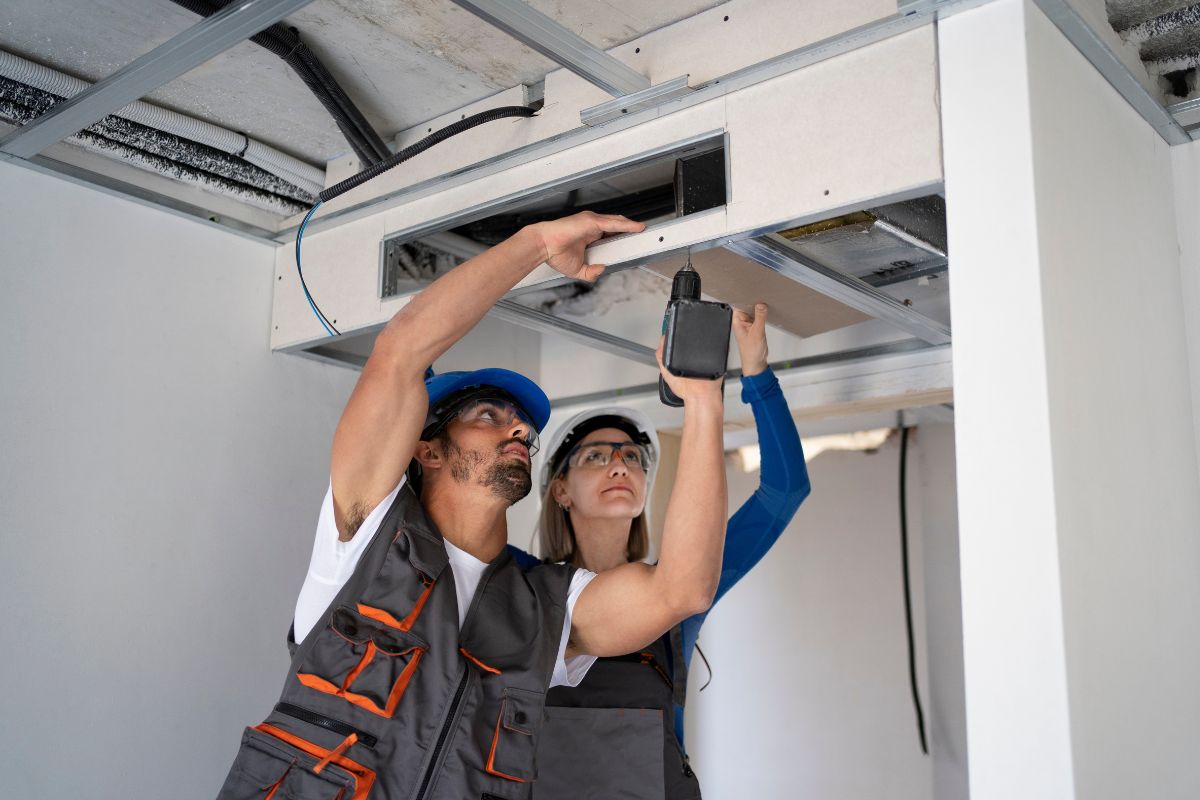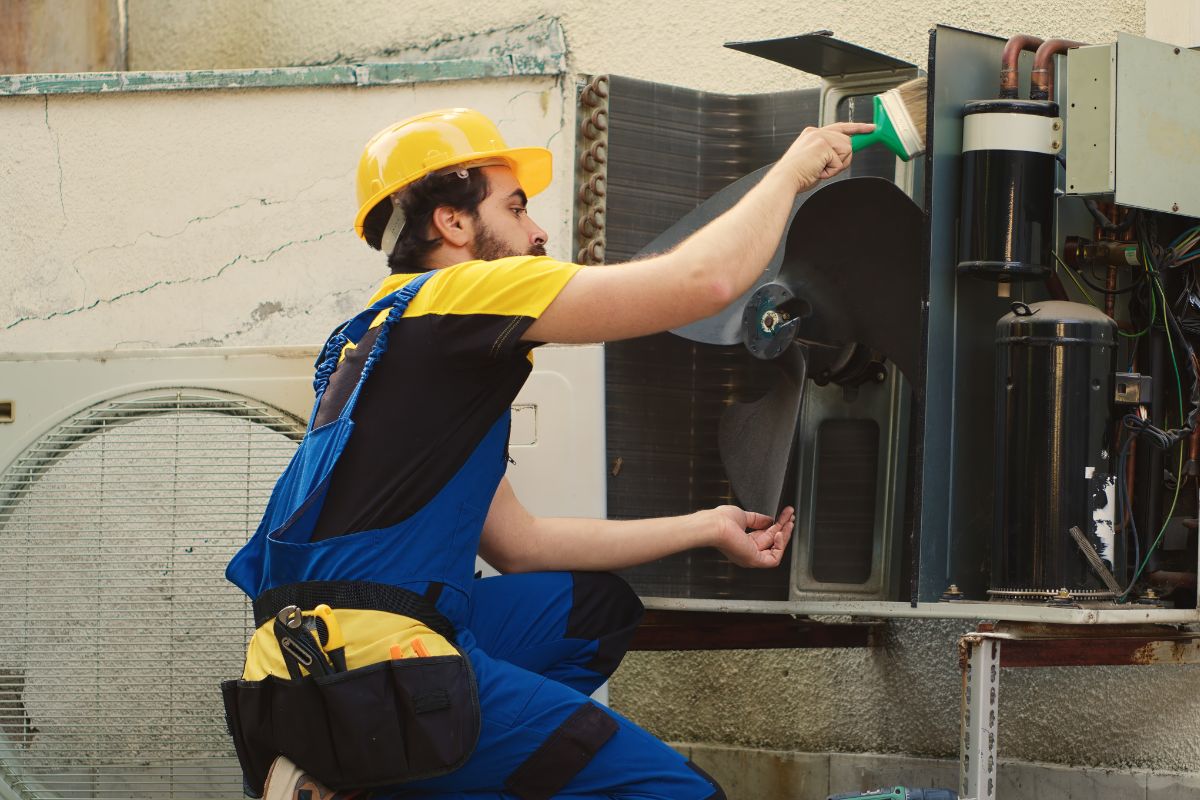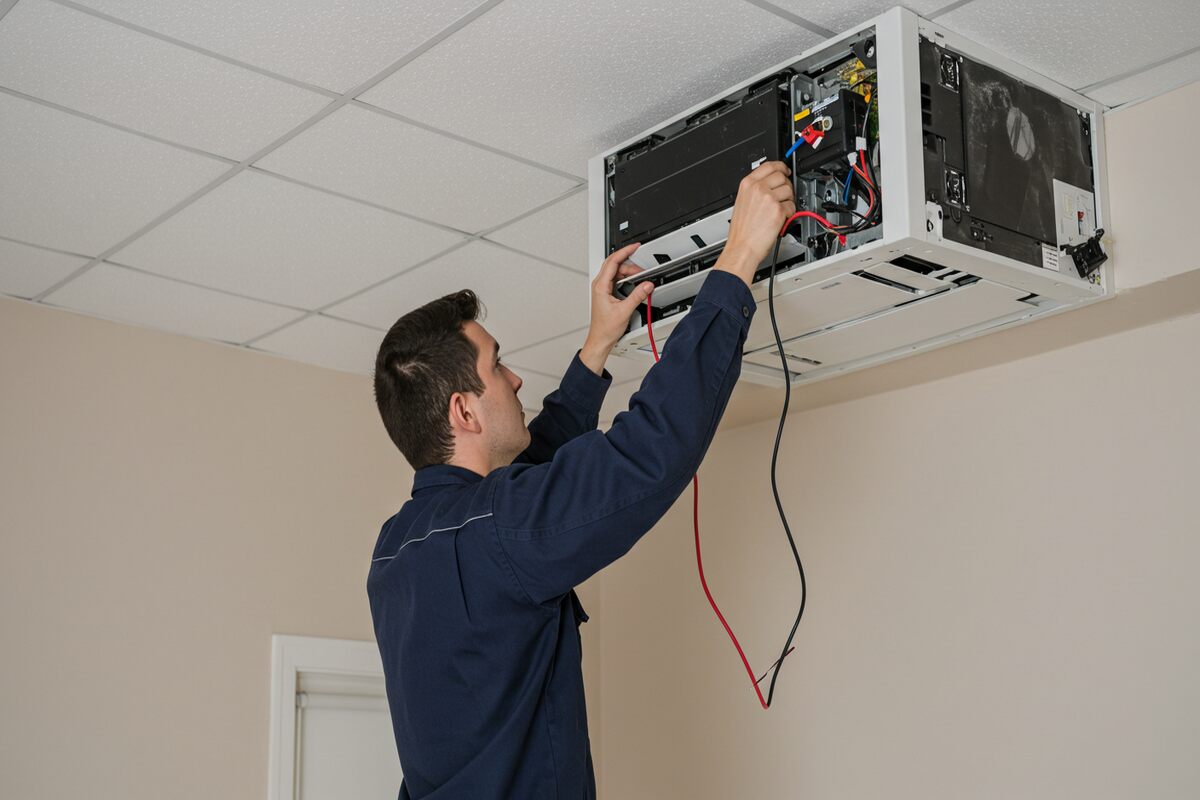When an air conditioner stops blowing cold air during a heatwave or a furnace shuts off in the middle of a freezing night, comfort disappears fast. The good news is that many HVAC issues have simple causes you can check safely before you call for help. This guide explains quick steps you can take right now, when to call an emergency HVAC technician, and how to prevent future breakdowns. If you live in Toronto, Mississauga, Brampton, Vaughan, or anywhere in the GTA, these tips can help you restore comfort quickly and protect your system from costly damage.
Step 1: Stay Calm and Check the Thermostat
Start with the control center. Confirm the thermostat is powered, set to the correct mode, and set a few degrees beyond the current room temperature. For cooling, choose “Cool” and set the temperature lower than the room reading. For heating, choose “Heat” and raise the temperature a few degrees. If your thermostat is battery powered, replace the batteries and wait a few minutes to see if the system responds. Many service calls begin and end with this simple check.
Step 2: Verify Power and Fuel Supply
Loss of power is a common reason for sudden shutdowns. Open your electrical panel and look for a tripped breaker labeled for the furnace, air handler, or outdoor condenser. Reset it once; if it trips again, stop and call a technician because repeated trips point to a deeper electrical issue. For gas furnaces, make sure the gas valve near the unit is in the open position and that other gas appliances are working normally. For heat pumps, confirm any outdoor disconnect switch is fully seated. If power and fuel look normal but the system still will not turn on, continue with the next steps.
Step 3: Replace or Clean the Air Filter
Restricted airflow can cause performance loss, overheating, short cycling, and even safety shutdowns. Slide out the return air filter and inspect it under a light. If you cannot see light through the media, it is time to replace it. In most homes, a filter change every one to three months keeps airflow where it should be. A clean filter can quickly improve cooling capacity, restore strong airflow from vents, reduce strain on the blower motor, and lower energy use.
Step 4: Inspect Vents, Registers, and the Outdoor Unit
Walk the home and confirm supply registers are open and unblocked by rugs or furniture. Closed or obstructed vents can create pressure problems and hot or cold spots. If you have central AC or a heat pump, step outside and check the condenser. Clear away leaves, grass, or snow within a two-foot radius. Make sure the fan can spin freely and the coil surfaces are not clogged. For furnaces, ensure the intake and exhaust pipes on the exterior wall are free of ice, debris, or nests. Restoring clear airflow often brings systems back to life.
Step 5: Listen and Smell for Warning Signs
HVAC systems communicate through sound and smell. Rattling can mean loose panels or components. Screeching or grinding suggests motor or bearing trouble. A sharp burning odor can indicate an electrical issue. A persistent musty smell can point to moisture or microbial growth in ducts or the air handler. If you notice any of these, switch the system off at the thermostat and the breaker, then book a professional inspection. Running a struggling unit can turn a small fix into a major repair.
Step 6: Try a Safe System Reset
Sometimes a gentle reset clears minor control faults. Turn the thermostat off. At the electrical panel, switch the HVAC breaker off for sixty seconds, then back on. Wait five minutes to allow built-in safeties and pressures to normalize. Turn the thermostat back on and set it to your desired mode. If normal operation resumes, continue monitoring. If the fault returns, schedule service to diagnose the root cause.
When to Call Emergency HVAC Service
Basic checks are helpful, but certain situations require professional attention right away. Call an emergency HVAC technician if your home is unsafe due to extreme heat or cold, if you notice smoke, sparks, or a burning smell, if the system repeatedly trips breakers, short cycles, or will not start after a reset, or if you hear grinding, screeching, or metal-on-metal noises. In these cases, prompt service protects your equipment and your home. AirNest provides 24/7 HVAC repair across the GTA with licensed technicians, clear pricing, and fast response.
Simple Ways to Prevent Future Breakdowns
Prevention is the most cost-effective strategy for home comfort. Schedule professional maintenance twice a year—spring for cooling and fall for heating. Replace filters regularly, keep the outdoor condenser or heat pump free from debris, and ensure vents stay open and clear. Address small symptoms early, such as uneven temperatures, unusual noises, or rising energy bills. These habits extend equipment life, improve indoor air quality, and boost efficiency.
Why Homeowners in the GTA Choose AirNest
Homeowners choose local service that puts reliability first. AirNest offers around-the-clock emergency HVAC repairs, certified and experienced technicians, transparent estimates before work begins, and coverage across Toronto, Mississauga, Brampton, Vaughan, and surrounding communities. Whether you need same-day AC repair, urgent furnace service, or seasonal HVAC maintenance, a dependable team makes all the difference when comfort is on the line.
SEO Tips: Keywords to Help This Guide Get Found
To help homeowners discover this resource, include phrases like emergency HVAC repair, AC not cooling, furnace not turning on, same-day AC repair GTA, furnace repair Toronto, HVAC troubleshooting steps, and 24/7 HVAC service. Use them naturally in headings, intro paragraphs, image alt text, and meta tags to support search visibility while keeping the writing clear and helpful.
FAQs
How long does an AC or furnace repair usually take?
Simple fixes such as thermostat adjustments or replacing a failed capacitor can be completed quickly, often within an hour. More complex issues that require diagnostics, parts ordering, or safety testing can take longer. A thorough assessment on arrival sets clear expectations.
Is it safe to keep running my system if it is making loud noises?
No. Turn the system off at the thermostat and breaker. Loud screeching, grinding, or banging can signal motor, blower, or compressor problems. Running the unit may lead to further damage or failure. Schedule an inspection before restarting.
How often should I schedule HVAC maintenance?
Plan two tune-ups per year: one in spring for cooling and one in fall for heating. Routine maintenance improves efficiency, reduces surprise breakdowns, and helps the system reach its expected lifespan.
What can I check myself before calling an emergency technician?
Confirm thermostat settings, replace or clean the air filter, reset a tripped breaker once, clear debris around the outdoor unit, and ensure supply vents are open. If the system still will not operate or shows warning signs, contact an HVAC professional.




